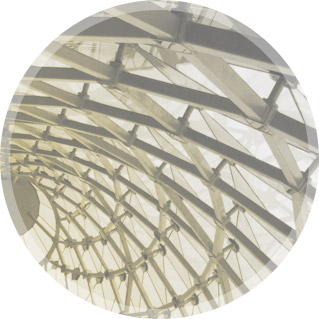Montana State University
School of Architecture
The School of Architecture at Montana State University continues to refine the vision of the school to respond to overarching trends in the profession of architecture with the ever increasing demand for environmental stewardship, visualization, digital fabrication and integrated design. The school believes that these trends will continue to evolve and redefine the face of the profession and will consequently continue to build the program around them. The school has a strong tradition of fostering independent design thinking in concert with independent research. Our award-winning faculty offer vigorous undergraduate and graduate educational programs. The multidisciplinary interests of our faculty and graduate students form the basis of exciting new research collaborations with a variety of other disciplines including the School of Agriculture, the School of Business and the School of Engineering. The School is currently collaborating with the non-profits Kohala Center (Big Island, Hawaii) and the Conscious Alliance (Boulder, Colorado) in addition to the North Face Research and Development Team to name a few.
http://www.arch.montana.edu/
Setting
Montana State University, with 12,000 students, lies in the picturesque Gallatin Valley high in the Montana Rockies. The spacious campus is in the culturally-rich, historic town of Bozeman, named All America City by the National Civic League in 2001. Yellowstone National Park, Big Sky and Bridger Bowl ski areas are all a short drive away from the campus. The School of Architecture is part of the College of Arts and Architecture, which also includes art, music, media and theater arts.
School Philosophy
The MSU School of Architecture seeks to prepare students for a lifelong critical engagement in the arts and science of architecture. Located in "the last best place" of the Northern Rockies we are in an extraordinary position to engage questions regarding the relationship between the natural and built environments. To that end, we teach and practice a moral, ethical and aesthetic responsibility to society and the natural world in the design of the built environment. It is in our design studios, that this philosophy is most clearly demonstrated. Each studio is conceived to build upon the previous studio in a manner that develops a student's mastery of the science of architecture while at the same time exposing the student to the rich diversity of our faculty's philosophical beliefs. Within a structured sequence of increasingly complex problems emphasis is placed on teaching both an iterative design process and the visualization skills necessary to demonstrate the resultant design proposals. The science of architecture is continuously evolving and will do so over the life of every architect. We are committed to preparing our students to enter the profession with both the contemporary scientific knowledge and emerging technical expertise to further this evolution while at the same time ensuring that our graduates are grounded in the fundamental processes, composition and drawing skills that have been central to architecture throughout its history. In addition to the science of architecture we are equally committed to ensuring that our graduates acquire a critical philosophy with which they can engage the design of the built environment.

Programs
The rigorous four-year Bachelor of Arts in Environmental Design program prepares students for a wide variety of career and educational options. Undergraduate education in environmental design is organized around an intense, design studio-based gradual immersion into architectural expertise. Each design studio is organized around a set of objectives, an emphasis, a scale, and complexity. The first year is intended to encourage the greatest possible diversity of students to explore the opportunities and expectations of an environmental design education. Students acquire the fundamental math, science, writing, and design skills that are the foundation of their future learning. Particular emphasis is placed on conceptualization in the first year of the curriculum. The second year requires that students complete their university core to ensure a broad perspective from which to engage their environmental design education. The design studio introduces fundamental strategies of precedent analysis, the organization of human activities and sustainability while applying the knowledge acquired in structures and graphics courses. Particular emphasis is placed on use & context during the second year of the curriculum. Throughout the third year students develop the ability to design environmental control and integrated building construction systems as well as the ability to utilize advanced graphic communication strategies. A professional practice course provides students with an understanding of the strategies by which design concepts and business strategies are resolved. In the third year, particular emphasis is placed on building tectonics within the curriculum. Built upon the foundations of the first three years, the fourth year consists of one required studio course during one semester and a selection from one of the option studios in the other semester. Every student must complete a capstone studio emphasizing professional responsibility in which the student must synthesize program development, site development, structural systems, environmental controls systems, principles of sustainability and graphic communication. During the other semester-whether summer, fall or spring-all students choose between our foreign study program, completing an approved internship, working in the School of Architecture Community Design Center, or completing an approved off campus program of study. With the satisfactory completion of the fourth year of study, students will receive a Bachelor of Arts in Environmental Design degree. Students wishing to acquire the Masters of Architecture Degree must complete two semesters of graduate study. Throughout this graduate study, students will choose from a variety of architectural studios, craft studios, architectural seminars, and non-architectural electives intended to emphasize the development of a critical position with regard to the environment and architecture. A final comprehensive studio or thesis is required that demonstrates, through the development of an architectural project, the student's moral, ethical and aesthetic responsibility to society and the natural world.

of Focus
1. Community Design
2. Design/Build
3. History | Theory | Criticism

Opportunities

Facilities

Policies
Transfer Policies
Transfer Students with Previous Architecture Studies
Students wishing to transfer directly into the second year or higher of the SoA program must submit a portfolio of work to the MSU School of Architecture by May 1. The portfolio should include all design work a student has completed. There is no length limit on the portfolio. In addition a student must submit and unofficial transcript of work completed. Students wishing to gain entrance to the program should have taken both a Math and Physics course prior to applying. The Math course should be Pre-Calculus or Calculus and the Physics course should be a College Physics. These two courses are required as they are pre-requisites for other courses in the Architecture program. Transfer students will have their portfolios evaluated as part of the normal application process. Students will be notified about their potential placement into the MSU Architecture program by mid-June. Students must also complete the General Transfer Student application with the MSU Admissions Office. Interested students should send materials directly to the School of Architecture at:
160 Cheever Hall
Bozeman, MT 59717-3760
Transfer Students with no prior Architecture Studies
A student interested in transferring to the MSU School of Architecture who has taken no previous Architecture courses should apply as a general transfer student. Students in this category will be required to take the standard first year Architecture courses and apply for admittance into the program. Transfer coursework will be evaluated by the MSU Admissions Office and applied to MSU degree requirements. In most cases, transfer work will be count toward general education degree requirements.
MSU School of Architecture does offer an Intensive first year summer program open to second degree and transfer students. This program takes the first year of the program coursework and compresses it to a 12-week summer program. This allows second degree and transfer students to maximize their time to complete all coursework. The intensive summer program is set up for students who have completed the Pre-Calculus and Physics requirements. On average there are 12-15 students who participate in the summer program.


